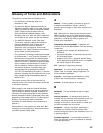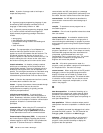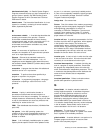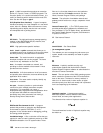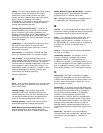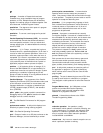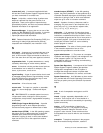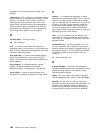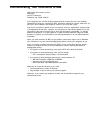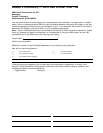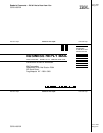remote shell (rsh). A command supplied with both
AIX and the Parallel System Support Programs that lets
you issue commands on a remote host.
Report. In Xprofiler, a tabular listing of performance
data that is derived from the gmon.out files of an
application. There are five types of reports that are
generated by Xprofiler, and each one presents different
statistical information for an application.
| Resource Manager. A server that runs on one of the
| nodes of a IBM RS/6000 SP (SP) machine. It prevents
| parallel jobs from interfering with each other, and
| reports job-related node information.
RISC. Reduced Instruction Set Computing (RISC), the
technology for today's high-performance personal
computers and workstations, was invented in 1975.
S
shell script. A sequence of commands that are to be
executed by a shell interpreter such as C shell, korn
shell, or Bourne shell. Script commands are stored in a
file in the same form as if they were typed at a terminal.
segmentation fault. A system-detected error, usually
caused by referencing an invalid memory address.
server. A functional unit that provides shared services
to workstations over a network; for example, a file
server, a print server, a mail server.
signal handling. A type of communication that is used
by message passing libraries. Signal handling involves
using AIX signals as an asynchronous way to move
data in and out of message buffers.
source line. A line of source code.
source code. The input to a compiler or assembler,
written in a source language. Contrast with object
code.
SP. IBM RS/6000 SP; a scalable system from two to
128 processor nodes, arranged in various physical
configurations, that provides a high-powered computing
environment.
SPMD (Single Program Multiple Data). A parallel
programming model in which different processors
execute the same program on different sets of data.
standard input (STDIN). In the AIX operating system,
the primary source of data entered into a command.
Standard input comes from the keyboard unless
redirection or piping is used, in which case standard
input can be from a file or the output from another
command.
standard output (STDOUT). In the AIX operating
system, the primary destination of data produced by a
command. Standard output goes to the display unless
redirection or piping is used, in which case standard
output can go to a file or to another command.
stencil. A pattern of memory references used for
averaging. A 4-point stencil in two dimensions for a
given array cell, x(i,j), uses the four adjacent cells,
x(i-1,j), x(i+1,j), x(i,j-1), and x(i,j+1).
subroutine. (1) A sequence of instructions whose
execution is invoked by a call. (2) A sequenced set of
instructions or statements that may be used in one or
more computer programs and at one or more points in
a computer program. (3) A group of instructions that
can be part of another routine or can be called by
another program or routine.
synchronization. The action of forcing certain points
in the execution sequences of two or more
asynchronous procedures to coincide in time.
system administrator. (1) The person at a computer
installation who designs, controls, and manages the use
of the computer system. (2) The person who is
responsible for setting up, modifying, and maintaining
the Parallel Environment.
System Data Repository. A component of the Parallel
System Support Programs software that provides
configuration management for the SP system. It
manages the storage and retrieval of system data
across the control workstation, file servers, and nodes.
System Status Array. An X-Windows run time monitor
tool, provided with the Parallel Operating Environment,
that lets you quickly survey the utilization of processor
nodes.
T
task. A unit of computation analogous to an AIX
process.
thread. A single, separately dispatchable, unit of
execution. There may be one or more threads in a
process, and each thread is executed by the operating
system concurrently.
tracing. In PE, the collection of data for the
Visualization Tool (VT). The program is
traced
by
collecting information about the execution of the
program in trace records. These records are then
accumulated into a trace file which a user visualizes
with VT.
tracepoint. Tracepoints are places in the program
that, when reached during execution, cause the
Glossary of Terms and Abbreviations 193





